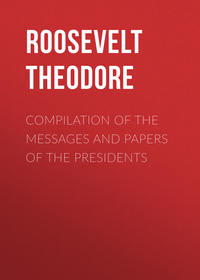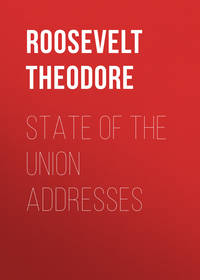 полная версия
полная версияThe Winning of the West, Volume 1
Among the hunters, surveyors, and explorers who came into the wilderness in 1773 was a band led by three young men named McAfee,—typical backwoodsmen, hardy, adventurous, their frontier recklessness and license tempered by the Calvinism they had learned in their rough log home. They were fond of hunting, but they came to spy out the land and see if it could be made into homes for their children; and in their party were several surveyors. They descended the Ohio in dugout canoes, with their rifles, blankets, tomahawks, and fishing-tackle. They met some Shawnees and got on well with them; but while their leader was visiting the chief, Cornstalk, and listening to his fair speeches at his town of Old Chilicothe, the rest of the party were startled to see a band of young Shawnee braves returning from a successful foray on the settlements, driving before them the laden pack-horses they had stolen.182
They explored part of Kentucky, and visited the different licks. One, long named Big Bone Lick, was famous because there were scattered about it in incredible quantity the gigantic remains of the extinct mastodon; the McAfees made a tent by stretching their blankets over the huge fossil ribs, and used the disjointed vertebrae as stools on which to sit. Game of many kinds thronged the spaces round the licks; herds of buffalo, elk, and deer, as well as bears and wolves, were all in sight at once. The ground round about some of them was trodden down so that there was not as much grass left as would feed a sheep; and the game trails were like streets, or the beaten roads round a city. A little village to this day recalls by its name the fact that it stands on a former "stamping ground" of the buffalo. At one lick the explorers met with what might have proved a serious adventure. One of the McAfees and a companion were passing round its outskirts, when some others of the party fired at a gang of buffaloes, which stampeded directly towards the two. While his companion scampered up a leaning mulberry bush, McAfee, less agile, leaped behind a tree trunk, where he stood sideways till the buffalo passed, their horns scraping off the bark on either side; then he looked round to see his friend "hanging in the mulberry bush like a coon."183
When the party left this lick they followed a buffalo trail, beaten out in the forest, "the size of the wagon road leading out of Williamsburg," then the capital of Virginia. It crossed the Kentucky River at a riffle below where Frankfort now stands. Thence they started homewards across the Cumberland Mountains, and suffered terribly while making their way through the "desolate and voiceless solitudes"; mere wastes of cliffs, crags, caverns, and steep hillsides covered with pine, laurel, and underbrush. Twice they were literally starving and were saved in the nick of time by the killing, on the first occasion, of a big bull elk, on the next, of a small spike buck. At last, sun-scorched and rain-beaten, foot-sore and leg-weary, their thighs torn to pieces by the stout briars,184 and their feet and hands blistered and scalded, they came out in Powell's Valley, and followed the well-worn hunter's trail across it. Thence it was easy to reach home, where the tale of their adventures excited still more the young frontiersmen.
Their troubles were ended for the time being; but in Powell's Valley they met other wanderers whose toil and peril had just begun. There they encountered the company185 which Daniel Boon was just leading across the mountains, with the hope of making a permanent settlement in far distant Kentucky.186 Boon had sold his farm on the Yadkin and all the goods he could not carry with him, and in September, 1773, he started for Kentucky with his wife and his children; five families, and forty men besides, went with him, driving their horses and cattle. It was the first attempt that was made to settle a region separated by long stretches of wilderness from the already inhabited districts; and it was doomed to failure. On approaching the gloomy and forbidding defiles of the Cumberland Mountains the party was attacked by Indians.187 Six of the men, including Boon's eldest son, were slain, and the cattle scattered; and though the backwoodsmen rallied and repulsed their assailants, yet they had suffered such loss and damage that they retreated and took up their abode temporarily on the Clinch River.
In the same year Simon Kenton, afterwards famous as a scout and Indian fighter, in company with other hunters, wandered through Kentucky. Kenton, like every one else, was astounded at the beauty and fertility of the land and the innumerable herds of buffalo, elk, and other game that thronged the trampled ground around the licks. One of his companions was taken by the Indians, who burned him alive.
In the following year numerous parties of surveyors visited the land. One of these was headed by John Floyd, who was among the ablest of the Kentucky pioneers, and afterwards played a prominent part in the young commonwealth, until his death at the hands of the savages. Floyd was at the time assistant surveyor of Fincastle County; and his party went out for the purpose of making surveys "by virtue of the Governor's warrant for officers and soldiers on the Ohio and its waters."188
They started on April 9, 1774,—eight men in all,—from their homes in Fincastle County.189 They went down the Kanawha in a canoe, shooting bear and deer, and catching great pike and catfish. The first survey they made was one of two thousand acres for "Colo. Washington"; and they made another for Patrick Henry. On the way they encountered other parties of surveyors, and learned that an Indian war was threatened; for a party of thirteen would-be settlers on the upper Ohio had been attacked, but had repelled their assailants, and in consequence the Shawnees had declared for war, and threatened thereafter to kill the Virginians and rob the Pennsylvanians wherever they found them.190 The reason for this discrimination in favor of the citizens of the Quaker State was that the Virginians with whom the Indians came chiefly in contact were settlers, whereas the Pennsylvanians were traders. The marked difference in the way the savages looked at the two classes received additional emphasis in Lord Dunmore's war.
At the mouth of the Kanawha191 the adventurers found twenty or thirty men gathered together; some had come to settle, but most wished to explore or survey the lands. All were in high spirits, and resolute to go to Kentucky, in spite of Indian hostilities. Some of them joined Floyd, and raised his party to eighteen men, who started down the Ohio in four canoes.192 They found "a battoe loaded with corn," apparently abandoned, and took about three bushels with them. Other parties joined them from time to time, as they paddled and drifted down stream; and one or two of their own number, alarmed by further news of Indian hostilities, went back. Once they met a party of Delawares, by whom they were not molested; and again, two or three of their number encountered a couple of hostile savages; and though no one was hurt, the party were kept on the watch all the time. They marvelled much at the great trees—one sycamore was thirty-seven feet in circumference,—and on a Sunday, which they kept as a day of rest, they examined with interest the forest-covered embankments of a fort at the mouth of the Scioto, a memorial of the mound-builders who had vanished centuries before.
When they reached the mouth of the Kentucky193 they found two Delawares and a squaw, to whom they gave corn and salt. Here they split up, and Floyd and his original party spent a week in the neighborhood, surveying land, going some distance up the Kentucky to a salt lick, where they saw a herd of three hundred buffalo.194 They then again embarked, and drifted down the Ohio. On May 26th they met two Delawares in a canoe flying a red flag; they had been sent down the river with a pass from the commandant at Fort Pitt to gather their hunters and get them home, in view of the threatened hostilities between the Shawnees and Virginians.195 The actions of the two Indians were so suspicious, and the news they brought was so alarming, that some of Floyd's companions became greatly alarmed, and wished to go straight on down the Mississippi; but Floyd swore that he would finish his work unless actually forced off. Three days afterwards they reached the Falls.
Here Floyd spent a fortnight, making surveys in every direction, and then started off to explore the land between the Salt River and the Kentucky. Like the others, he carried his own pack, which consisted of little but his blanket and his instruments. He sometimes had difficulties with his men; one of them refused to carry the chain one day, and went off to hunt, got lost, and was not found for thirty-six hours. Another time it was noticed that two of the hunters had become sullen, and seemed anxious to leave camp. The following morning, while on the march, the party killed an elk and halted for breakfast; but the two hunters walked on, and, says the journal, "we never saw them more"; but whether they got back to the settlements or perished in the wilderness, none could tell.
The party suffered much hardship. Floyd fell sick, and for three days could not travel. They gave him an "Indian sweat," probably building just such a little sweat-house as the Indians use to this day. Others of their number at different times fell ill; and they were ever on the watch for Indians. In the vast forests, every sign of a human being was the sign of a probable enemy. Once they heard a gun, and another time a sound as of a man calling to another; and on each occasion they redoubled their caution, keeping guard as they rested, and at night extinguishing their camp-fire and sleeping a mile or two from it.
They built a bark canoe in which to cross the Kentucky, and on the 1st of July they met another party of surveyors on the banks of that stream.196 Two or three days afterwards, Floyd and three companions left the others, agreeing to meet them on August 1st, at a cabin built by a man named Harwood, on the south side of the Kentucky, a few miles from the mouth of the Elkhorn. For three weeks they surveyed and hunted, enchanted with the beauty of the country.197 They then went to the cabin, several days before the appointed time; but to their surprise found every thing scattered over the ground, and two fires burning, while on a tree near the landing was written, "Alarmed by finding some people killed and we are gone down." This left the four adventurers in a bad plight, as they had but fifteen rounds of powder left, and none of them knew the way home. However there was no help for it, and they started off.198 When they came to the mountains they found it such hard going that they were obliged to throw away their blankets and every thing else except their rifles, hunting-shirts, leggings, and moccasins. Like the other parties of returning explorers, they found this portion of their journey extremely distressing; and they suffered much from sore feet, and also from want of food, until they came on a gang of buffaloes, and killed two. At last they struck Cumberland Gap, followed a blazed trail across it to Powell's Valley, and on August 9th came to the outlying settlements on Clinch River, where they found the settlers all in their wooden forts, because of the war with the Shawnees.199
In this same year many different bodies of hunters and surveyors came into the country, drifting down the Ohio in pirogues. Some forty men led by Harrod and Sowdowsky200 founded Harrodsburg, where they built cabins and sowed corn; but the Indians killed one of their number, and the rest dispersed. Some returned across the mountains; but Sowdowsky and another went through the woods to the Cumberland River, where they built a canoe, paddled down the muddy Mississippi between unending reaches of lonely marsh and forest, and from New Orleans took ship to Virginia.
At that time, among other parties of surveyors there was one which had been sent by Lord Dunmore to the Falls of the Ohio. When the war broke out between the Shawnees and the Virginians, Lord Dunmore, being very anxious for the fate of these surveyors, sent Boon and Stoner to pilot them in; which the two bush veterans accordingly did, making the round trip of 800 miles in 64 days. The outbreak of the Indian war caused all the hunters and surveyors to leave Kentucky; and at the end of 1774 there were no whites left, either there or in what is now middle Tennessee. But on the frontier all men's eyes were turned towards these new and fertile regions. The pioneer work of the hunter was over, and that of the axe-bearing settler was about to begin.
CHAPTER VII.
SEVIER, ROBERTSON, AND THE WATAUGA COMMONWEALTH, 1769-1774
Soon after the successful ending of the last colonial struggle with France, and the conquest of Canada, the British king issued a proclamation forbidding the English colonists from trespassing on Indian grounds, or moving west of the mountains. But in 1768, at the treaty of Fort Stanwix, the Six Nations agreed to surrender to the English all the lands lying between the Ohio and the Tennessee;201 and this treaty was at once seized upon by the backwoodsmen as offering an excuse for settling beyond the mountains. However, the Iroquois had ceded lands to which they had no more right than a score or more other Indian tribes; and these latter, not having been consulted, felt at perfect liberty to make war on the intruders. In point of fact, no one tribe or set of tribes could cede Kentucky or Tennessee, because no one tribe or set of tribes owned either. The great hunting-grounds between the Ohio and the Tennessee formed a debatable land, claimed by every tribe that could hold its own against its rivals.202
The eastern part of what is now Tennessee consists of a great hill-strewn, forest-clad valley, running from northeast to southwest, bounded on one side by the Cumberland, and on the other by the Great Smoky and Unaka Mountains; the latter separating it from North Carolina. In this valley arise and end the Clinch, the Holston, the Watauga, the Nolichucky, the French Broad, and the other streams, whose combined volume makes the Tennessee River. The upper end of the valley lies in southwestern Virginia, the head-waters of some of the rivers being well within that State; and though the province was really part of North Carolina, it was separated therefrom by high mountain chains, while from Virginia it was easy to follow the watercourses down the valley. Thus, as elsewhere among the mountains forming the western frontier, the first movements of population went parallel with, rather than across, the ranges. As in western Virginia the first settlers came, for the most part, from Pennsylvania, so, in turn, in what was then western North Carolina, and is now eastern Tennessee, the first settlers came mainly from Virginia, and, indeed, in great part, from this same Pennsylvanian stock.203 Of course, in each case there was also a very considerable movement directly westward.204 They were a sturdy race, enterprising and intelligent, fond of the strong excitement inherent in the adventurous frontier life. Their untamed and turbulent passions, and the lawless freedom of their lives, made them a population very productive of wild, headstrong characters; yet, as a whole, they were a God-fearing race, as was but natural in those who sprang from the loins of the Irish Calvinists. Their preachers, all Presbyterians, followed close behind the first settlers, and shared their toil and dangers; they tilled their fields rifle in hand, and fought the Indians valorously. They felt that they were dispossessing the Canaanites, and were thus working the Lord's will in preparing the land for a race which they believed was more truly His chosen people than was that nation which Joshua led across the Jordan. They exhorted no less earnestly in the bare meeting-houses on Sunday, because their hands were roughened with guiding the plow and wielding the axe on week-days; for they did not believe that being called to preach the word of God absolved them from earning their living by the sweat of their brows. The women, the wives of the settlers, were of the same iron temper. They fearlessly fronted every danger the men did, and they worked quite as hard. They prized the knowledge and learning they themselves had been forced to do without; and many a backwoods woman by thrift and industry, by the sale of her butter and cheese, and the calves from her cows, enabled her husband to give his sons good schooling, and perhaps to provide for some favored member of the family the opportunity to secure a really first-class education.205
The valley in which these splendid pioneers of our people settled, lay directly in the track of the Indian marauding parties, for the great war trail used by the Cherokees and by their northern foes ran along its whole length. This war trail, or war trace as it was then called, was in places very distinct, although apparently never as well marked as were some of the buffalo trails. It sent off a branch to Cumberland Gap, whence it ran directly north through Kentucky to the Ohio, being there known as the warriors' path. Along these trails the northern and southern Indians passed and re-passed when they went to war against each other; and of course they were ready and eager to attack any white man who might settle down along their course.
In 1769, the year that Boon first went to Kentucky, the first permanent settlers came to the banks of the Watauga,206 the settlement being merely an enlargement of the Virginia settlement, which had for a short time existed on the head-waters of the Holston, especially near Wolf Hills.207 At first the settlers thought they were still in the domain of Virginia, for at that time the line marking her southern boundary had not been run so far west.208 Indeed, had they not considered the land as belonging to Virginia, they would probably not at the moment have dared to intrude farther on territory claimed by the Indians. But while the treaty between the crown and the Iroquois at Fort Stanwix209 had resulted in the cession of whatever right the Six Nations had to the southwestern territory, another treaty was concluded about the same time210 with the Cherokees, by which the latter agreed to surrender their claims to a small portion of this country, though as a matter of fact before the treaty was signed white settlers had crowded beyond the limits allowed them. These two treaties, in the first of which one set of tribes surrendered a small portion of land, while in the second an entirely different confederacy surrendered a larger tract, which, however, included part of the first cession, are sufficient to show the absolute confusion of the Indian land titles.
But in 1771, one of the new-comers,211 who was a practical surveyor, ran out the Virginia boundary line some distance to the westward, and discovered that the Watauga settlement came within the limits of North Carolina. Hitherto the settlers had supposed that they themselves were governed by the Virginian law, and that their rights as against the Indians were guaranteed by the Virginian government; but this discovery threw them back upon their own resources. They suddenly found themselves obliged to organize a civil government, under which they themselves should live, and at the same time to enter into a treaty on their own account with the neighboring Indians, to whom the land they were on apparently belonged.
The first need was even more pressing than the second. North Carolina was always a turbulent and disorderly colony, unable to enforce law and justice even in the long-settled districts; so that it was wholly out of the question to appeal to her for aid in governing a remote and outlying community. Moreover, about the time that the Watauga commonwealth was founded, the troubles in North Carolina came to a head. Open war ensued between the adherents of the royal governor, Tryon, on the one hand, and the Regulators, as the insurgents styled themselves, on the other, the struggle ending with the overthrow of the Regulators at the battle of the Alamance.212
As a consequence of these troubles, many people from the back counties of North Carolina crossed the mountains, and took up their abode among the pioneers on the Watauga213 and upper Holston; the beautiful valley of the Nolichucky soon receiving its share of this stream of immigration. Among the first comers were many members of the class of desperate adventurers always to be found hanging round the outskirts of frontier civilization. Horse-thieves, murderers, escaped bond-servants, runaway debtors—all, in fleeing from the law, sought to find a secure asylum in the wilderness. The brutal and lawless wickedness of these men, whose uncouth and raw savagery was almost more repulsive than that of city criminals, made it imperative upon the decent members of the community to unite for self-protection. The desperadoes were often mere human beasts of prey; they plundered whites and Indians impartially. They not only by their thefts and murders exasperated the Indians into retaliating on innocent whites, but, on the other hand, they also often deserted their own color and went to live among the redskins, becoming their leaders in the worst outrages.214
But the bulk of the settlers were men of sterling worth; fit to be the pioneer fathers of a mighty and beautiful state. They possessed the courage that enabled them to defy outside foes, together with the rough, practical commonsense that allowed them to establish a simple but effective form of government, so as to preserve order among themselves. To succeed in the wilderness, it was necessary to possess not only daring, but also patience and the capacity to endure grinding toil. The pioneers were hunters and husbandmen. Each, by the aid of axe and brand, cleared his patch of corn land in the forest, close to some clear, swift-flowing stream, and by his skill with the rifle won from canebrake and woodland the game on which his family lived until the first crop was grown.
A few of the more reckless and foolhardy, and more especially of those who were either merely hunters and not farmers, or else who were of doubtful character, lived entirely by themselves; but, as a rule, each knot of settlers was gathered together into a little stockaded hamlet, called a fort or station. This system of defensive villages was very distinctive of pioneer backwoods life, and was unique of its kind; without it the settlement of the west and southwest would have been indefinitely postponed. In no other way could the settlers have combined for defence, while yet retaining their individual ownership of the land. The Watauga forts or palisaded villages were of the usual kind, the cabins and blockhouses connected by a heavy loop-holed picket. They were admirably adapted for defence with the rifle. As there was no moat, there was a certain danger from an attack with fire unless water was stored within; and it was of course necessary to guard carefully against surprise. But to open assault they were practically impregnable, and they therefore offered a sure haven of refuge to the settlers in case of an Indian inroad. In time of peace, the inhabitants moved out, to live in their isolated log-cabins and till the stump-dotted clearings. Trails led through the dark forests from one station to another, as well as to the settled districts beyond the mountains; and at long intervals men drove along them bands of pack-horses, laden with the few indispensable necessaries the settlers could not procure by their own labor. The pack-horse was the first, and for a long time the only, method of carrying on trade in the backwoods; and the business of the packer was one of the leading frontier industries.
The settlers worked hard and hunted hard, and lived both plainly and roughly. Their cabins were roofed with clapboards, or huge shingles, split from the log with maul and wedge, and held in place by heavy stones, or by poles; the floors were made of rived puncheons, hewn smooth on one surface; the chimney was outside the hut, made of rock when possible, otherwise of logs thickly plastered with clay that was strengthened with hogs' bristles or deer hair; in the great fire-place was a tongue on which to hang pot-hooks and kettle; the unglazed window had a wooden shutter, and the door was made of great clapboards.215 The men made their own harness, farming implements, and domestic utensils; and, as in every other community still living in the heroic age, the smith was a person of the utmost importance. There was but one thing that all could have in any quantity, and that was land; each had all of this he wanted for the taking,—or if it was known to belong to the Indians, he got its use for a few trinkets or a flask of whisky. A few of the settlers still kept some of the Presbyterian austerity of character, as regards amusements; but, as a rule, they were fond of horse-racing, drinking, dancing, and fiddling. The corn-shuckings, flax-pullings, log-rollings (when the felled timber was rolled off the clearings), house-raisings, maple-sugar-boilings, and the like were scenes of boisterous and light-hearted merriment, to which the whole neighborhood came, for it was accounted an insult if a man was not asked in to help on such occasions, and none but a base churl would refuse his assistance. The backwoods people had to front peril and hardship without stint, and they loved for the moment to leap out of the bounds of their narrow lives and taste the coarse pleasures that are always dear to a strong, simple, and primitive race. Yet underneath their moodiness and their fitful light-heartedness lay a spirit that when roused was terrible in its ruthless and stern intensity of purpose.











